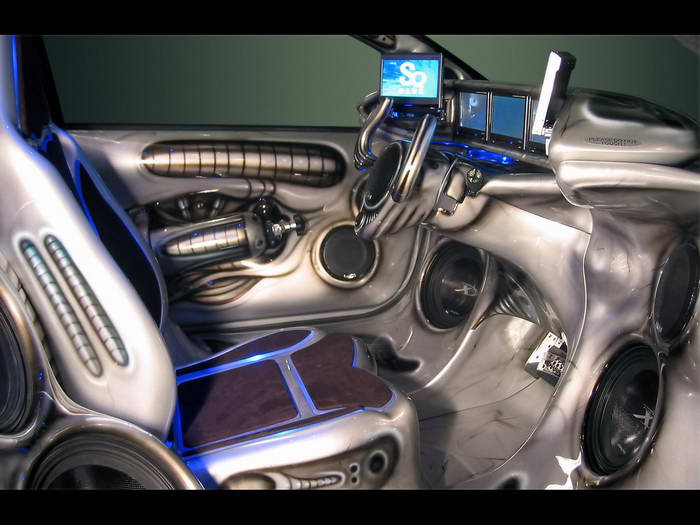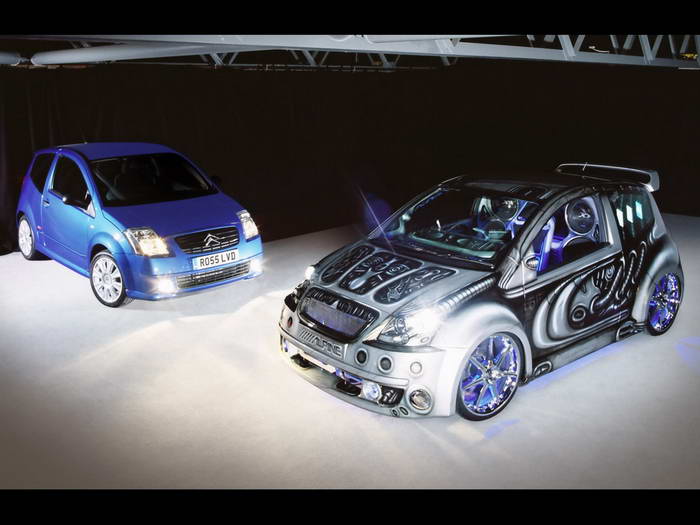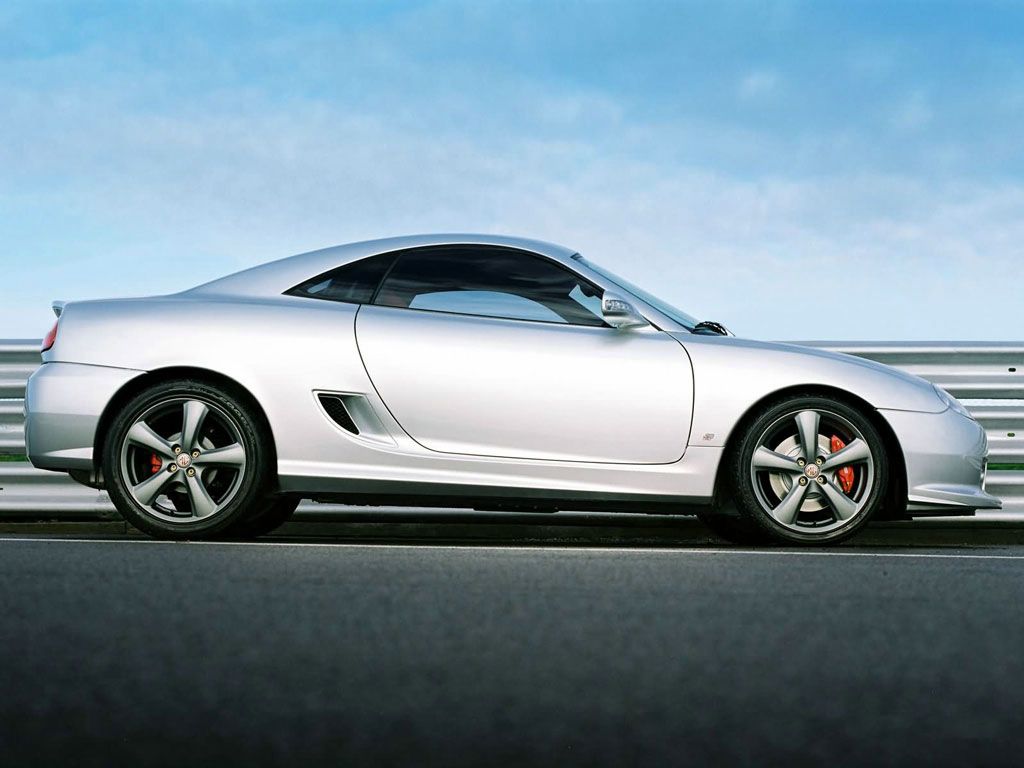The new 420bhp (SAE) Jaguar XKR is a sensational car to drive. With 120bhp (SAE) more power than the normally aspirated 4.2-liter XK, the same strong and stiff aluminum body structure that ensures superb ride and handling, and a six-speed automatic transmission with Jaguar Sequential Shift that is regarded as class-leading in terms of gear-change speed as well as refinement, Jaguar’s blend of performance and dynamics reaches new heights with the XKR.

“Our aim when engineering the new XKR was to ensure that the car’s characteristics remained in balance despite the significant increase in power over the XK,” explains Jaguar’s chief engineer, Mike Cross. “Working with that as our base, our brief was to create ‘XK plus 30%’ – the ultimate sports GT for the real world.
“We wanted the performance and dynamism you would expect of an XKR but were careful to retain that exceptional blend of sporting luxury that every Jaguar must have and which was so convincingly demonstrated with the XK. The bottom line is: if you like the XK, you’ll absolutely love the new XKR.”
The result of that engineering brief is a car that performs in any condition, at any speed. With superb torque at low engine speeds, instant acceleration is always available should you demand it. Similarly, the advanced steering and suspension set-up means the new XKR switches effortlessly from relaxed grand tourer to honed sports car with ease. It is everything the XK is and much more.
The ability to call upon impressive reserves of power and acceleration in an instant is the hallmark of every great Jaguar. The new XKR ensures this by using a remarkable 4.2-liter supercharged AJ-V8 engine. Producing 420bhp (SAE) at 6,250rpm and 413 lb-ft (560Nm) (EEC) of torque at 4,000rpm, it is capable of propelling the Coupe version to 60mph in 4.9 seconds (5.0 seconds for the Convertible) and onto an electronically limited top speed of 155mph (250kph).
The addition of a supercharger and twin air intakes means the new XKR benefits from a 120bhp (SAE) power increase over the normally aspirated 4.2-liter XK with which it shares its engine configuration. Torque, so essential for instant acceleration at any engine speed, also increases significantly – by 36% over the XK, although the overall weight of the XKR is raised by just 154lb (70kg). Consequently the power-to-weight ratio compared to the normally aspirated 4.2-liter XK is an impressive 34% higher.
And in comparison to the previous generation XKR, the new engine produces more power and more torque. Combined with the significantly stiffer and lighter aluminum monocoque body structure of the new XKR, these performance improvements lead to a significant leap in the power-to-weight ratio of 12% over the previous XKR and an equally useful jump of 7.7% in the torque-to-weight ratio. To achieve the equivalent improvements in power and torque-to-weight in the outgoing XKR would have required nearly 50 more horsepower. Consequently, the 0-60mph sprint time of the new XKR Coupe is reduced by 0.3 seconds.
The heart of these significant performance improvements is the XKR’s lightweight eight-cylinder engine with an Eaton supercharger. The water-cooled cylinders are arranged in a 90-degree V configuration and the crankshaft is supported by five main bearings. Each of the two cylinder head assemblies incorporates twin camshafts operating four valves per cylinder. One of the reasons for the engine’s impressive output is the continuously variable valve timing which helps to deliver a wide spread of torque. The engine uses an Electronic Return-less Fuel System (ERFS) and a three-way catalyst exhaust system.
The increase in power and torque over the outgoing XKR model is down to two significant additions to the engine. The air intake supply to the engine has been significantly enhanced thanks to the use of twin air inlets, and a Variable Inlet Camshaft Timing system is used for the first time on the XKR. By continuously adjusting the timing of the inlet camshaft on both banks of the V8, depending on the engine speed and load, Jaguar’s engineers have ensured large improvements in torque, particularly at lower revs.
The system is controlled by the Engine Management System (EMS) which receives engine speed, throttle position and oil temperature data from its sensors. The EMS determines the correct inlet camshaft timing by continuously referring to a digital three-dimensional map developed to provide optimum performance. The EMS then transmits the appropriate signals to two solenoids that control the degree of hydraulic force provided to the valve actuators.
The normally aspirated 4.2-liter XK has been praised for its acoustic qualities, remaining unobtrusive and relaxed at modest speeds but producing an unmistakeable V8 soundtrack when worked hard. On the XKR, the noise from the supercharger threatened to dominate the acoustic character and mask the underlying sound quality. However, through enhancements to the vehicle acoustic pack, the supercharger noise has been reduced by 5dB compared to the previous XKR.
This approach to acoustics allowed the engineers to concentrate on using the exhaust system to deliver the best possible sound quality character. This was accomplished through the use of the XKR’s Active Exhaust system which varies the flow of exhaust gases through the main silencer box to ensure that the XKR remains quiet at cruising speeds, but delivers a substantially more purposeful sound quality character under hard acceleration.
Jaguar’s Sequential Shift uniquely combines all the speed and involvement of a sequential manual gearbox with the comfort and convenience of a full automatic.
The system consists of steering-wheel-mounted paddles and a conventional gear selector lever, allowing the driver to switch between three automatic or paddle-operated gearbox modes.
Whereas an automated manual gearbox interrupts the flow of torque during the gearchange – while the clutch is disengaged – the Jaguar’s gearbox maintains the flow of torque throughout the shifting process. This results in gearchanges that are not only quick, but also remarkably smooth. Gearshifts are achieved in less than 600 milliseconds, from the point at which the driver operates the shift paddle to the point at which the shift is complete.
In fact, during development, comparison tests between Jaguar Sequential Shift and rival automatic transmissions in the class showed the transmission to be the fastest system of all, changing gear at least 400 milliseconds faster than a standard automatic and 100 milliseconds faster than the best automated manual system.
The three gearbox modes give the driver total flexibility to use the transmission to match whatever driving style he or she chooses. In Drive mode, the gearbox behaves as a conventional automatic, with the software optimized for every day driving conditions providing all the benefits of a best-in-class automatic transmission.
In Sport mode, the gearbox’s adaptive software becomes more prevalent, adapting and reacting more dynamically to demanding conditions. This software takes account of the prevailing conditions and driver’s inputs and adapts accordingly. For example, it recognizes when the car is negotiating a curve, and holds the gear accordingly; Hill Recognition enables the XKR to choose the ratios to optimize the ascent or descent of a hill; the gearbox’s software will also match the engine speed precisely to the engine and road speeds, ‘blipping’ the throttle during rapid downshifts.
Manual mode is activated by simply operating one of the steering-wheel-mounted paddles, and delivers a state-of-the-art manual gear shift feel from the automatic transmission.
To ensure optimum ride and handling, the XKR’s springs and dampers are uprated compared to the normally aspirated XK. The front spring rate is increased by 38% and the rear spring rate by 24%. Allied to the Servotronic steering system, which has also been tuned both mechanically and electronically to give the steering more weight and even greater response, the suspension ensures confidence-inspiring handling without any loss in refinement and comfort levels.
Because of the inherent strength and stiffness of the chassis, the only significant addition to the XKR’s structure is an additional rear suspension brace mounted between the rear damper towers to accommodate the significant increase in rear spring rate. This also allows the Convertible to utilize the same dynamic settings as the Coupe model.
The Computer Active Technology Suspension (a two-stage adaptive damping system that ensures the optimum balance between ride and handling) and new switchable Dynamic Stability Control with Traction Control System (Trac DSC) have also been recalibrated to cope with the additional power of the supercharged engine.
As significant to the XKR as the increases in power and torque are the major improvements in strength and weight thanks to its advanced all-aluminum architecture. Unique in the industry as a complete aluminum monocoque body structure, as distinct from an aluminum spaceframe with separate aluminum exterior panels, its properties come from both the way the bodyshell is designed and constructed, and the use of new joining technologies.
In fact, the new XKR’s aluminum chassis is significantly lighter and stiffer in both Coupe and Convertible form than the steel model it replaces. The Coupe chassis is over 30 percent stiffer than the previous XK, while the Convertible is over 40 percent stiffer. As a consequence, the XKR accelerates faster than the previous model, while offering high levels of safety, reduced noise and vibration intrusion, and improved ride and handling characteristics thanks to improved suspension dynamics.
In Convertible form, the BIW weight, at just 633lb (287kg), is 19 percent lighter than the previous XKR Convertible.
New, larger ventilated brake discs at the front ensure higher braking performance for the XKR. The front brake disc diameter has increased from 12.8in to 14.0in (326mm to 355mm), and the thickness from 1.2in to 1.3in (30mm to 32mm), which not only improves the braking performance but also the system’s resistance to fade. The braking system also includes four-channel ABS, Electronic Brake Force Distribution, Hydraulic Brake Assist to increase brake pressure during an emergency stop, and Jaguar’s Electronic Park Brake function.
With the much-admired new XK already considered a future design classic, Jaguar’s creative team, led by Ian Callum, had a great starting point from which to produce the XKR. The XK range’s elegant form draws on the lineage of the original XK and E-Type sports cars, and by blending this unmistakeable Jaguar silhouette with contemporary flair, its exterior forms a stunning blend of elegance, athleticism and definition. The XKR takes now this athletic look one stage further thanks to the addition of:
+ New XKR front bumper with color-keyed finish to unique front fog lamp housings
+ Aluminum side power vent finish
+ Hood vents and unique ‘XKR’ aluminum finish to upper and lower front mesh grilles
+ Aluminum finish to rear signature ‘blade’ and selected exterior brightwork finishers
+ Unique ‘Jupiter’ design 19-inch alloy wheels as standard, with 20-inch ‘Cremona’ XKR wheel available as an option
+ Black brake callipers with ‘R’ logo
+ Quad exhaust system and unique lower bumper
+ ‘R’ rear badge
“We talk at Jaguar of how our new generation of models are ‘beautiful, fast cars’. It’s a phrase that ideally sums up our brand and can be applied to every car we design. We were extremely proud of the reaction to the new XK when it was unveiled last year – it is as beautiful as you would expect a Jaguar sports car to be. Now, the new XKR has a look that emphasizes the ‘fast’ aspect of our design statement.
“The ‘powerline’ that runs from the front wheel through the cabin area and into the car’s rear haunches remains, and we have added to that latent feeling of power by adding some strong performance features such as the vents that signify the potent supercharger and the stunning new alloys that fill the wheel arches and give the car real purpose.”
The new XK’s interior design has been just as highly praised and the XKR’s cabin represents arguably the most sophisticated yet driver-focussed environment of any car in its class. The XKR has class-leading ergonomics, user-friendly in-car technology and simple, clear information displays in the instrument panel and main dashboard area.
A unique sports seat design with additional lateral support for both the driver and front seat passenger has been added, with an ‘R’ badge on the headrests, tachometer, steering wheel and gear selector. The design of the standard aluminum interior veneer is also unique to the XKR, featuring a ‘weave’ pattern from the Advanced Lightweight Coupe showcar.





+HondaV4Concept-5.jpg)





 MG TF LE500
MG TF LE500  MG TF LE500
MG TF LE500  MG TF LE500
MG TF LE500  MG TF LE500
MG TF LE500  MG TF LE500
MG TF LE500  MG GT Concept
MG GT Concept  MG GT Concept
MG GT Concept  MG GT Concept
MG GT Concept 

 MG TF Cool Blue SE
MG TF Cool Blue SE  MG TF Cool Blue SE
MG TF Cool Blue SE  MG TF Cool Blue SE
MG TF Cool Blue SE  MG TF Cool Blue SE
MG TF Cool Blue SE -Set-For-North-American-2.jpg)
-Set-For-North-American-4.jpg)
-Set-For-North-American-1.jpg)
-Set-For-North-American-6.jpg)
-Set-For-North-American-5.jpg)
-Set-For-North-American-3.jpg)
-Set-For-North-American-7.jpg)
 Add deepening job insecurity into the mix, send the economy into a variety of wild up-and-down motions, and the injustice of it all becomes nearly intolerable.
Add deepening job insecurity into the mix, send the economy into a variety of wild up-and-down motions, and the injustice of it all becomes nearly intolerable. ave happened. But it did. It doesn't have to be this way. But it is. You most likely didn't help bring all this about but now you're forced to live with the consequences."
ave happened. But it did. It doesn't have to be this way. But it is. You most likely didn't help bring all this about but now you're forced to live with the consequences."























